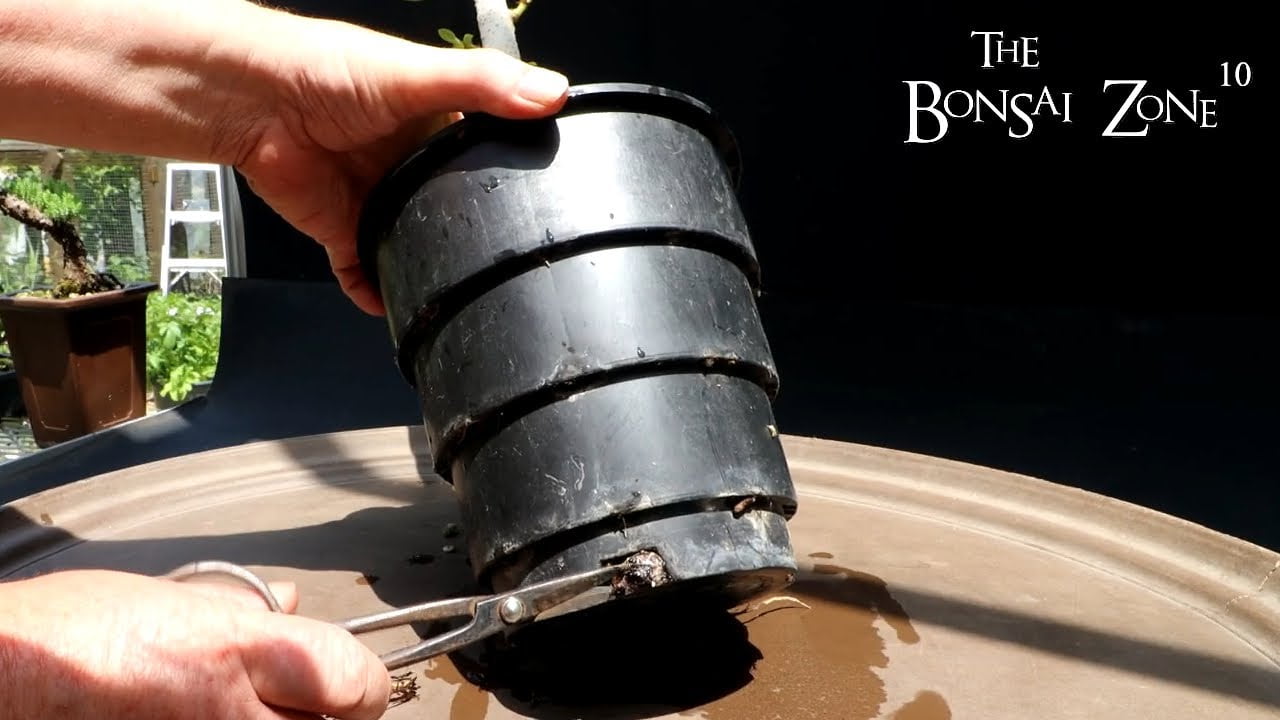Are you a bonsai enthusiast wondering how to successfully transplant your young banyan tree? Look no further! In this tutorial, I’ll walk you through my experience and provide useful tips to ensure the process goes smoothly. From choosing the right soil to proper pruning techniques, you’ll have all the information you need to take the best care of your banyan bonsai. So let’s get started and help your tree thrive for years to come!
How I Transplanted My Young Banyan Tree: A Bonsai Zone Tutorial in June 2023
Introduction
Bonsai cultivation is a form of Japanese traditional art, which involves growing and sculpting small trees in containers. Growing and developing a bonsai tree requires patience, attention to detail, and the right tools. In this article, I’ll be sharing my experience of transplanting my young Banyan Ficus tree, which I’ve cultivated using a “root maker” pot for over a year.
The Effect of the Root-Maker Pot on the Banyan Ficus tree
The Banyan Ficus tree is known for its majestic size, long aerial roots, and buttress roots that provide support in tropical areas. I’ve used a root maker pot to cultivate the tree because it promotes a fibrous root system that is better for the tree’s overall health. I’ve noticed a significant difference in the quality and thickness of the roots that have grown in the pot.
Pruning and Repotting the Tree
After a year of growth, the Banyan Ficus tree had outgrown its root maker pot, and it was time to transplant it. I decided to prune the tree to promote a buttressed root system, which is essential to support the tree’s future growth. I also repotted the tree into a new, more shallow pot, which promotes the growth of smaller, more fibrous roots.
The Growth Process of Banyan Ficus Trees
Banyan Ficus trees are known for their sprawling branches that spread out and create a canopy. I wanted to mimic the style of giant banyan trees by growing my Banyan Ficus tree to have a low, spread-out branching system. I also aimed to keep the canopy short, which is crucial to creating the desired effect.
Watering and Care for the Tree
Growing bonsai trees requires constant care, especially watering, which must be frequent during dry weather. I have a collection of bonsai trees that I showcase in my outdoor area, which requires significant maintenance. Some of the trees require more attention than others, and the Banyan Ficus tree is one of them.
Developing Another Ficus Tree in a Similar Style
Another Ficus tree that I’m growing is being developed in a similar style to my Banyan Ficus tree. It has low branches and a short canopy to resemble a miniature banyan tree. The trees complement each other and look great when displayed together.
Dealing with the Long Aerial Roots of the Banyan Ficus Tree
Banyan Ficus trees are known for their long aerial roots that can fuse with the drainage holes of the pot, making it challenging to repot. I had to use concave cutters to carve away the roots in the drainage hole area to free up the tree from the pot. This process took several hours, but it was necessary to ensure the tree’s health and future growth.
Conclusion
Bonsai cultivation is an art form that requires skill, patience, and attention to detail. Cultivating Banyan Ficus trees is a rewarding experience, and the aesthetic appeal of mature bonsai trees cannot be overstated. I hope my experience of transplanting my young Banyan Ficus tree has been informative and helpful, and that you too can gain valuable insights into the world of bonsai cultivation.
FAQs
1. Can I transplant my Banyan Ficus tree at any time?
No, it is best to transplant Banyan Ficus trees during the spring or early summer before the tree enters active growth.
2. How much light does a Banyan Ficus tree require?
Banyan Ficus trees can grow in full sun or partial shade. They require at least four hours of direct sunlight each day.
3. Can I keep my Banyan Ficus tree indoors?
Banyan Ficus trees can be grown indoors but require bright, indirect light, consistent moisture, and a well-draining soil mix.
4. How often do I need to water my Banyan Ficus tree?
Banyan Ficus trees require consistent moisture. Water the tree when the soil feels slightly dry to the touch but avoid overwatering.
5. What are the benefits of using a root maker pot?
Root maker pots encourage the growth of fibrous roots, provide better airflow, and reduce transplant shock in plants. These pots can lead to healthier, faster-growing plants.


